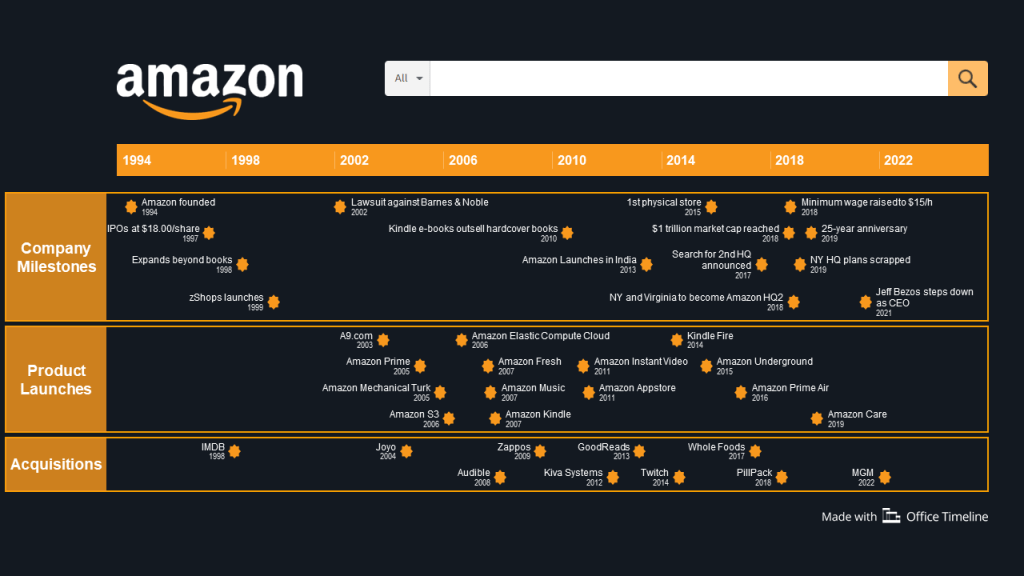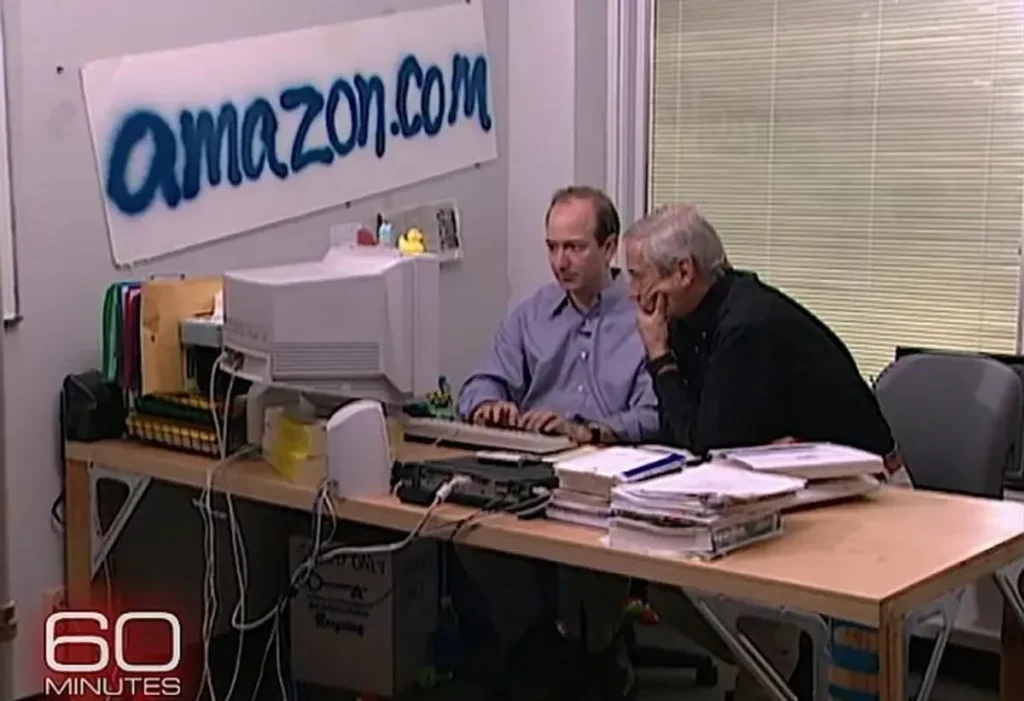Amazon, a global e-commerce behemoth, has redefined how we shop and conduct business. Its remarkable success story is a testament to innovation, customer-centric strategies, and adaptability in a fast-paced market. In this article, we delve into the secrets behind Amazon’s success, uncovering the key elements that have propelled it to the top.
Founded by Jeff Bezos in 1994, started as an online bookstore in a small garage in Seattle. However, it quickly outgrew its initial niche, evolving into a retail giant that sells virtually everything. What makes Amazon stand out, though, is not just its vast product catalog but its relentless pursuit of excellence.\
Table of contents
The Genesis of Amazon
The history of Amazon’s success begins with a simple yet powerful idea: to provide customers with convenience and an extensive product selection at competitive prices. Bezos understood the potential of e-commerce and was determined to make online shopping accessible to everyone.


Amazon’s Early Struggles
Amazon’s journey was challenging. In its early years, the company faced financial difficulties and skepticism from investors. However, Bezos was unwavering in his vision, taking risks and innovating to overcome obstacles. Amazon’s success can be attributed to its aggressive expansion strategy. It quickly diversified its offerings, acquiring companies like Zappos and Whole Foods and entering new markets, including cloud computing and streaming services.

Innovations and Technological Advancements
One of Amazon’s secrets to success is its commitment to innovation. It introduced the Kindle e-reader, Echo smart speakers, and the cashier-less Amazon Go stores, constantly pushing the boundaries of technology.
Innovations & Their Impact
| Innovation | Description | Impact |
| Kindle e-reader | Introduced in 2007, it revolutionized the book industry by allowing users to download and read digital books. | Increased e-book sales, changed reading habits. |
| Echo smart speakers | Launched in 2014, these voice-activated devices brought AI (Alexa) into homes, enabling voice-controlled tasks. | Created a smart home ecosystem, boosted voice commerce. |
| Amazon Go stores | First opened in 2018, these cashier-less stores use computer vision and AI to track purchases, streamlining the shopping experience. | Reduced checkout friction, improved customer convenience. |
| Amazon Web Services (AWS) | Started in 2006, it offers cloud computing, storage, and other services, becoming a dominant player in the industry. | Significant revenue source, powers countless websites and applications. |
| Prime subscription | Introduced in 2005, it combined benefits like fast shipping, streaming, and more, increasing customer loyalty. | Attracted millions of subscribers, boosted customer retention. |
| Amazon Air | Launched in 2016, it’s Amazon’s air delivery network, enhancing logistics for faster deliveries. | Improved delivery speed and capacity. |
| Amazon Robotics | Utilizes robotics for fulfillment centers, increasing efficiency and accuracy in order processing. | Streamlined warehouse operations, reduced human error. |
| Ring | Acquired in 2018, it offers smart home security solutions through video doorbells and cameras. | Enhanced home security and surveillance. |

Amazon Prime: A Game-Changer
The introduction of Amazon Prime revolutionized the e-commerce landscape. Prime offered customers fast, reliable shipping and a wide range of entertainment options, creating a loyal customer base that continues to grow.

Third-Party Sellers and the Marketplace
Amazon’s marketplace model allowed third-party sellers to list their products on the platform, significantly expanding the product range. This strategy leveraged Amazon’s existing infrastructure while boosting the earnings of countless small businesses. Amazon’s vast network of fulfilment centres and cutting-edge logistics ensures efficient order processing and delivery, which is crucial in meeting customer expectations and reducing shipping times.
Amazon Web Services (AWS)
Another pivotal development was the launch of Amazon Web Services (AWS). AWS provides cloud computing solutions and significantly contributes to Amazon’s profitability. Many businesses worldwide rely on AWS for their IT infrastructure. Despite its dominance, Amazon faces stiff competition from companies like Walmart and Alibaba. This competition fuels innovation and keeps Amazon on its toes, always striving to provide better services.
Sustainability Initiatives
In recent years, Amazon has made substantial investments in sustainability. The company aims to be net-zero carbon by 2040, promoting environmentally friendly practices and renewable energy usage. The secret behind Amazon’s success is its ability to adapt and evolve. As technology and consumer preferences change, Amazon continues to innovate, expand, and refine its operations, ensuring it remains a dominant force in the global market.
Conclusion
In conclusion, Amazon’s success story results from visionary leadership, relentless innovation, and a strong commitment to customer satisfaction. As Amazon continues to grow and diversify, it serves as an inspiration for businesses worldwide.
Readmore : 6 Reasons of Amazon Account Suspension Detail Explanation
FAQ’s
Amazon’s success can be attributed to its customer-centric approach, relentless innovation, and aggressive market expansion.
Amazon began as an online bookstore in 1994, founded by Jeff Bezos in a garage in Seattle
Amazon Prime is a subscription service that offers fast shipping, streaming, and various other benefits to its members.
AWS is Amazon’s cloud computing platform that provides a wide range of IT solutions to businesses worldwide.




